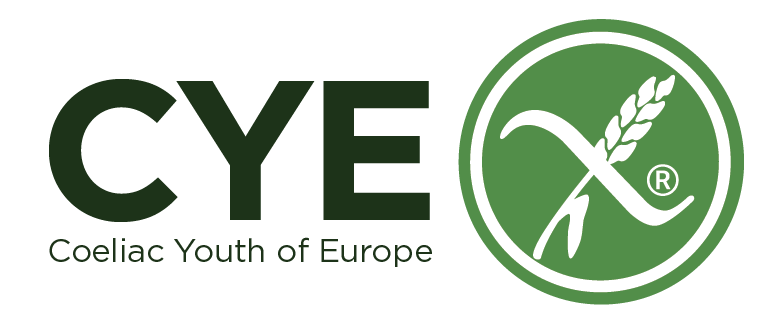Coeliac disease (CD) is an autoimmune disorder of the small bowel that occurs in genetically predisposed individuals in all age groups after the very early childhood; it is due to an abnormal reaction to gluten, a protein found in wheat (and similar proteins found in barley, rye and other cereals belonging to Triticae cultivars). In other words, gluten triggers an immune response which leads to self-destruction of the small bowel and subsequent malabsorption of macro- and micro-nutrients. Primarily related to the gut, it may well involve other body districts, such as the skin. Symptoms may include diarrhoea, failure to thrive/ weight loss and abdominal pain, but these may be absent in the atypical forms, characterized by a wide variety of symptoms ranging from anemia to miscarriage, tingling, weakness.
It affects approximately 1% of Caucasian populations, though it is significantly under-diagnosed.
A growing number of diagnoses are being made in asymptomatic persons as a result of increasing medical awareness worldwide.
At the moment, the only effective and safe treatment is a lifelong gluten-free diet.
Diagnosis
The condition is frequently misdiagnosed, under or overlooked, as it can exhibit multiple symptoms and often the patient or medical staff may not link seemingly unconnected conditions; as defined by an expert of the field, it is a “clinical chameleon”.
There are several tests that can be used to assist in diagnosis. The level of symptoms may determine the order of the tests, but all tests must be done while the person is on a gluten containing diet. Antibodies level begin to decline and intestinal damage begins to heal when gluten is removed from the diet, so the risk of misdiagnosis is increased if the person is not eating gluten. Biopsies can normalize over the course of weeks, and antibody levels drop over the course of months. For those who have already commenced themselves on a gluten-free diet, a re-challenge of 2-6 weeks with 10 g of gluten (four slices of bread) per day before repeating the investigations. Those who experience severe symptoms earlier can be regarded as sufficiently challenged and can be tested earlier.
Serology by blood test (anti-transglutaminase and anti-endomysial antibodies) is both good at diagnosing coeliac disease (high sensitivity of 98%, i.e. it misses 2 in 100 cases) and excluding it (high specificity of >95%, i.e. a positive test is most likely confirmative of coeliac disease rather than another condition), except for the anti-gliadin antibody. Because of the major implications of a diagnosis of coeliac disease, many recommend that a positive blood test is still followed by an endoscopy, even if nowadays it has been proposed by some experts that small intestinal biopsy is not always mandatory for the diagnosis. A negative test may still prompt a biopsy if the suspicion is very high; this would pick up the remaining 2% undiagnosed cases.
Anyhow, as currently agreed, the diagnoses comes out from the multidisciplinary approach, involving the clinician, the pathologist and the lab attendant, rather than as the only result from the biopsy.
Gluten-free diet
The only treatment is a life-long gluten-free diet. Several alternative therapies are currently under investigations, and in few years may be there could be more options for coeliac than the gluten-free diet. However, at this time no medication will prevent damage, nor prevent the body from attacking the gut when gluten is eaten. The disease is controlled by strict adherence to a gluten-free diet, which allows the intestine to heal and resolves all symptoms in the vast majority of cases and, depending on how soon the diet is begun, can also eliminate the heightened risk of osteoporosis and intestinal cancer, which anyhow is very rare.
Dietician input is generally requested to ensure the patient is aware which foods contain gluten, which foods are safe, and how to have a balanced diet despite the limitations. The diet can be cumbersome; while young children can be kept compliant by their parents, teenagers may wish to hide their problem or rebel against the dietary restrictions, risking relapse. Many food products contain traces of gluten even if apparently wheat-free. Gluten-free products are usually more expensive and harder to find than common wheat-containing foods. Great support in patient care is provided by the coeliac societies worldwide.
Everyday life on a gluten-free diet: how is it like?
To be on a gluten-free diet 24/7 may appear very hard, at least at the beginning. When you start the gluten-free diet, you should focus most on what you can eat rather then what you cannot.
Hereby gluten-free foods are shortly listed: all kind of meats and fish (unless cooked with breadcrumbs or wheat flavour!), eggs, all kinds of vegetables, all kinds of fruits, dairy products. The restriction is so limited to wheat (bread, pasta, pizza mainly), barley, rye and other cereals belonging to Triticae cultivars. Anyhow, one of the most important problems coeliacs should always deal with is gluten contamination. Gluten can be found in many processed products (even where you won’t imagine) and can be present in foods because of cross-contamination during factory processes or while cooking.
It is always safe to read all the labels and to consume, when possible, products which are claimed to be gluten-free. When eating out, coeliacs should always clearly state their condition to avoid contamination of gluten-free foods and ideally try to go in restaurants where the awareness about CD is high.
However, even if dealing with contamination may be hard, it should not stop coeliac to travel and to live their life without any mental or space limitation: the attitude towards coeliac disease and gluten-free diet shall always be positive, because we are on a diet to solve a problem, rather than creating more troubles.
That’s right attitude, perfectly in CYE style!
